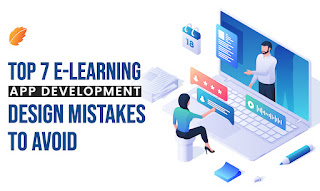Why Seamless Integration is the Key to a Top-Rated Telemedicine App
The popularity of telemedicine apps has skyrocketed in recent years. In fact, the global telemedicine market is projected to grow at a CAGR of 19.28% from 2022 to 2030, reaching a value of over $286 billion by 2030
With this immense growth, telemedicine app development is becoming increasingly competitive. To stand out, telemedicine apps need to provide a seamless and integrated user experience.
But why is seamless integration so crucial for a top-rated telemedicine app development?
In this blog, we will analyze the key integrations that set apart top-performing telemedicine applications:
- Integrating EHRs for continuity of care
- Scheduling and video calling integration
- Payment integration for digital transactions
- Integration with wearables for remote monitoring
Let's get started!
Why Integrate EHRs?
The most important integration for a telemedicine app development is with ;
Electronic Health Records (EHRs).
EHRs contain patient health information like medical history, prescriptions, lab reports, etc.
Integrating telemedicine apps with EHRs has the following benefits:
- Continuous care:
Doctors can seamlessly access patient EHRs during video consultations. This maintains continuity of care.
- Avoid repeat tests:
Unnecessary repeat tests are avoided as doctors can view previous test results in EHRs. This saves patients time and money.
- Reduce medication errors:
Medication reconciliation is easier by accessing the patient's prescription history in their EHR. This improves patient safety.
- Track health trends:
Doctors can analyze patient health trends over time using historical EHR data. This facilitates preventive care.
So for a smooth and safe virtual care experience, integrating telemedicine apps with EHRs is a must.
Scheduling-Video Integration
Along with EHRs, top telemedicine apps also integrate appointment scheduling and video calling.
Here's how this integration augments user experience:
- Patients can book appointments and start video consultations within the same app interface. No need to juggle between two apps.
- Doctors can directly join video calls from scheduled appointments. This minimizes delays.
-Appointment reminders can be automatically sent leading up to the video call time. This reduces no-shows.
- The virtual waiting room feature maintains queue discipline during peak hours. Patients enter a virtual queue while waiting for the doctor.
- Post-call summaries can be automatically added to the EHR once the video call ends. This documents the visit.
In fact, 64% of patients prefer booking telemedicine appointments within the app itself rather than switching apps.
Payment Integration
Telemedicine apps also need to integrate online payments for a seamless user experience.
Payment integration enables:
- In-app payments:
Patients can conveniently pay consultation fees within the app interface. Saves effort of payment through external gateways.
- Secure transactions:
Integration with payment gateways like PayPal ensures bank-grade security for financial transactions.
- Payment history:
Patients can access invoice history and manage payment methods through their profile.
- Insurance claims:
Smooth processing of insurance claims by capturing patient insurance details during payment.
According to a study, 81% of patients prefer paying telemedicine fees using digital payment methods.
Integration with Wearables and Devices
Some advanced telemedicine applications also integrate with wearable medical devices and health trackers.
This enables:
- Remote patient monitoring:
Doctors can seamlessly access health stats from integrated wearable devices during video consults.
- Accurate diagnosis:
Diagnostic accuracy improves as doctors can view real-time vitals like heart rate and blood pressure.
- Identify red flags:
Doctors can immediately detect potentially dangerous changes or patterns in health metrics. This enables timely intervention.
- Health promotion:
By tracking health metrics over time, doctors can provide customized health promotion advice to patients.
- Reduce ER visits:
Continuous remote monitoring reduces the need for emergency room visits for minor or non-critical health issues.
While device integration requires complex programming, leading telemedicine apps like Teladoc and Doctor on Demand offer this feature for a smoother user experience.
Bottom Line
To summarize, seamless integration is a must-have for top-rated telemedicine applications. Be it EHR integration, scheduling-video integration, payment integration or wearable device integration - they all enhance the user experience. Patients can digitally access care with ease and doctors can deliver quality virtual care.
So when choosing a telemedicine app development company, look for one that offers deep and seamless integration. This ensures a smooth and unified telehealth experience for patients and providers alike.
At Consagous Technologies, a leading telemedicine app development company, we specialize in building seamlessly integrated telemedicine apps using cutting-edge technologies.
Contact us to bring your digital health vision to life with a top-rated telemedicine app.

Comments
Post a Comment